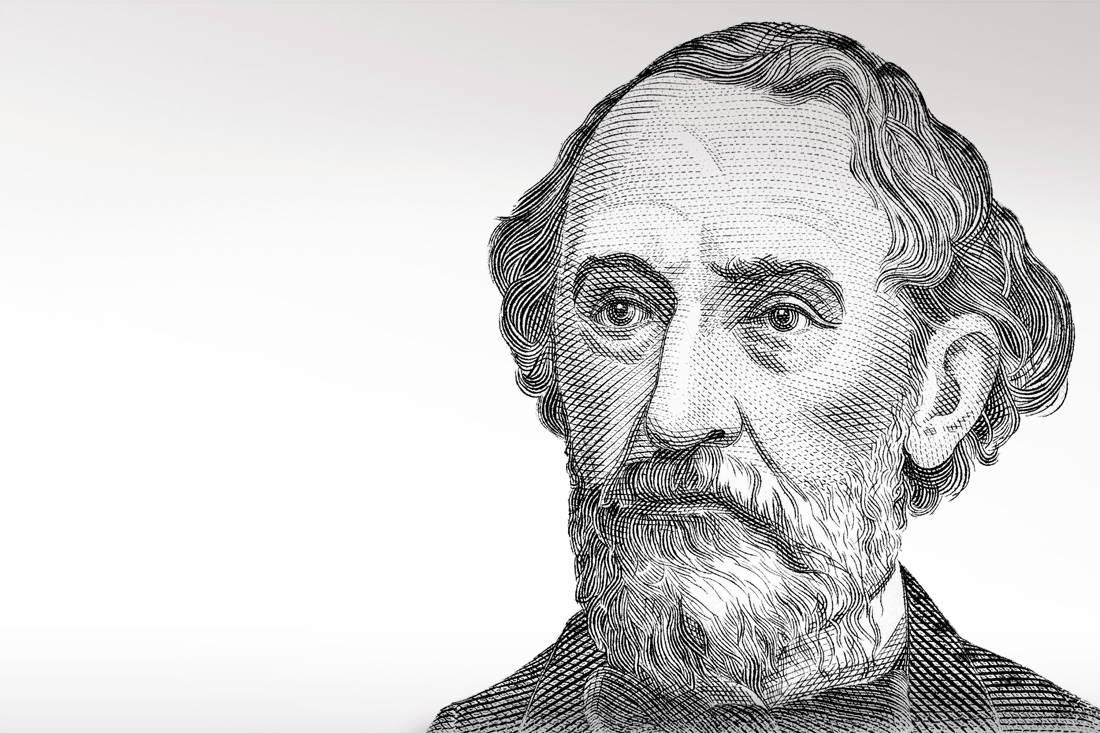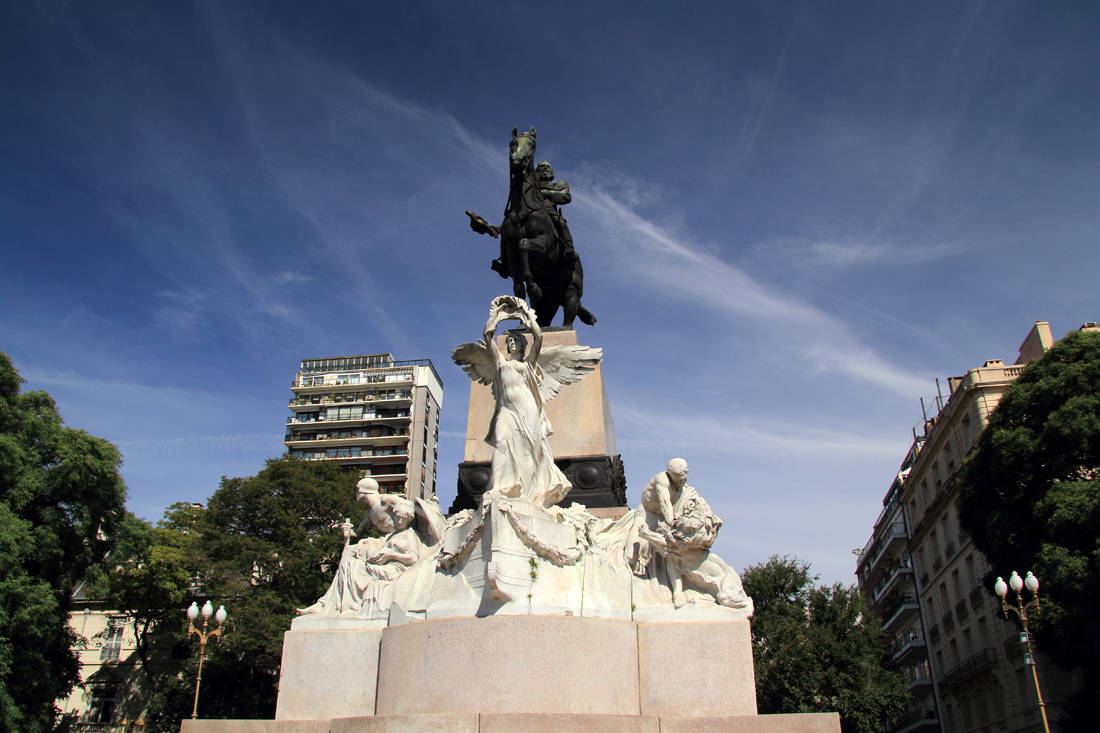Argentina is one of the countries that many Greeks view with sympathy, given that among the peoples there are some -many- common characteristics. It is no coincidence that the cuisine of the Latin American country has many fans in our area, as well as its music. Even from sports to catch it - and especially from football, the Argentines "stick" more with the Greeks and vice versa. The relations between the two countries are traditionally harmonious, while they are also connected by the Greek community there.
Something similar applies to Uruguay and this is not only due to accumulated coincidences, such as the colors on the flags of the three countries, but also to historical reasons. The thread that connects the relations between the peoples, can be caught from the period when the Europeans discovered America. Several Greeks also took part in the daring adventure for that time. This is largely normal, as many sailors from the reconstituted country were looking for their "Ithaca", but also the opportunity to get rid of the Turkish yoke and all the suffering it caused them. At the same time, there were many who sought protection - at the same time work - in Italy, Spain, Portugal, with these countries opening their sails at that time;
According to the Center for Historical Studies of Argentina, the first Greeks to set foot in those places made a decisive contribution to changing history. It is confirmed, in fact, that one of the first whites to penetrate the Inca empire and was even accepted by the Inca Atagualpa, is Petros Haniotis (Pedro de Candia). The chroniclers of the time record several Greeks who arrived together with the first conquerors and took part in the occupation operations of the lands that belonged to the Indians, but also in the struggles that took place later for independence.
For example, a Greek, Stefanos Roditis, went to Argentina with the mission of Pedro de Mendoza, who founded in 1536 the city of Santa Maria de los Buenos Aires, the current capital of the country. Also, in the first European team that… set foot in Paraguay, in 1544, were Grigoris Haniotis, Michalis Haniotis, Stefanos Stamatiou, Michalakis Graikos and Polos Graikos. And the rumors do not stop there: Giannis Dimitriou was among the people of Heronimo Luis de Cabrera, who founded Cordoba in 1573. This man is considered by many to be a direct ancestor of Bartolome Mitterrand Martinez, who in 1862 became the first president of the unified Argentina, after a bloody and chronic civil war.
The man who would become the founder of modern Argentina

However, for the man who was born in Buenos Aires on June 26, 1821 and was the first of four children of Ambrosio Estanislao de la Concepcion Mitre u Camps and Josefa Martinez Wederton (of Spanish-Irish descent) and is considered to be Reformer of Argentina, if something is not disputed, is his Greek origin on the part of his father. His first immigrant ancestor in the New World is said to have been Ventura Dimitrios Mitropoulos, who had traveled to Latin America from Venice in the late 17th century. Before going to the city of the Italian north he had left the area of Chimara, in Northern Epirus, around 1670, after the refusal of hundreds of young Greeks to enlist in the Ottoman Army. Most of them fled to the neighboring country, while for others the trip did not end there.
The surname Mitre came from the Spanishization of "Mitropoulos". Bartolome, a direct descendant of Ventura, showed his inclination to letters from a very young age. Urban legend has it that when Abrozio sent him as a small child to the farm of the Gervasio Rosa family, the brother of dictator Juan Manuel de Rosa, to be trained in agriculture and animal husbandry, they quickly sent him back, as the kid "did not do so." these works, except for reading ". In fact, from a young age he published his first poems.
Growing up, after moving to the Military Academy, he became a lieutenant in the Artillery, while at the same time he began to get involved in politics. In 1841 he married the woman with whom he had six children (four sons and two daughters). However, this fact would prove to be a small happy parenthesis, before a great adventure followed. As a political opponent of Juan Manuel de Rosa he was forced into exile. He worked as a soldier and journalist in Uruguay, being a supporter of General Fructuozo Rivera, who anointed him lieutenant colonel of the Uruguayan Army in 1846. He then lived in Bolivia, Peru and Chile, where he spent the last time with his friend Mantou. Alberti - published the magazine El Comercio de Valparaíso.
Miter returned to Argentina after the defeat of Rosa at the Battle of Cassero in 1852. He was the leader of the Buenos Aires uprising against the federal system of Justo José de Urquita in the Revolution of September 11, 1852, and was appointed to the government. In 1860 he was defeated at the Battle of Sepeda, but then - and after the region first rejoined the Argentine Confederation - would emerge victorious from the Battle of Pavon, a year later.
It was that period when, after almost fifty years of division, the vision of union did not seem absurd. In 1862 elections were called in 14 provinces and Miter was elected first president of a united Argentina, the first in the history of the united -now- country. With his assumption of the presidency, a pivotal period in history began, where the organization and stabilization of the newly formed state was achieved, despite the fact that the uprisings did not stop.
After the end of his term in 1868, the work of national integration was continued by the next two presidents: Domingo Faustino Sarmiento (1868-1874) and Nicolas Avegianeda (1874-1880). In essence, these three people, led by Miter, laid the foundations of modern-day Argentina. The 18 total years of their rule are called historic or founding presidencies for the country.
He never forgot his Greek roots

According to urban legend, but also some scattered reports, as clear evidence does not seem to exist, Bartolome Mitterrand never forgot the roots of his family. Although he never visited her Greece, is said to have spoken the Greek language fluently.
In addition to his political legacy, the first president of a unified Argentina also left a great cultural legacy in the country. He was the founder of the newspaper La Nacion, which not only circulates from January 1870 until today, but is also one of the most popular publications in Latin America. In fact, the current owner of Mesos is a descendant of Miter, who according to the website world.greekreporter.com visited our country in 2013.
Referring to his ancestor, the current owner newspaper stressed that "apart from being the founder and president of the Media, he was also a man of letters, who translated Homer's Odyssey from Greek into Spanish". Bartolome was also an important historian. This is because during the period he fought, he also recorded the wars of independence that took place in South America, while he also published several of his works, such as "The History of Belgrade and the Independence of Argentina", as well as "His History San Martin. "
Miter passed away in 1906 and his tomb has a prominent place in the La Recoleta Cemetery in Buenos Aires, being one of the most prominent figures in Argentina and Latin America in general.
